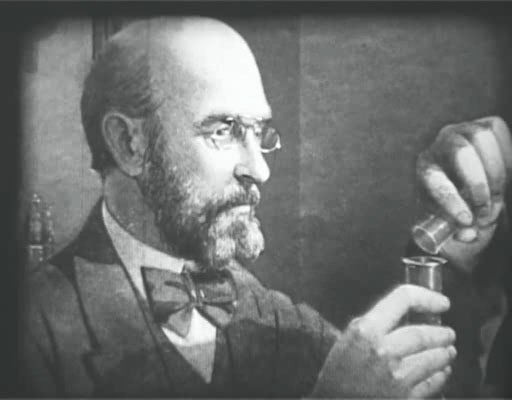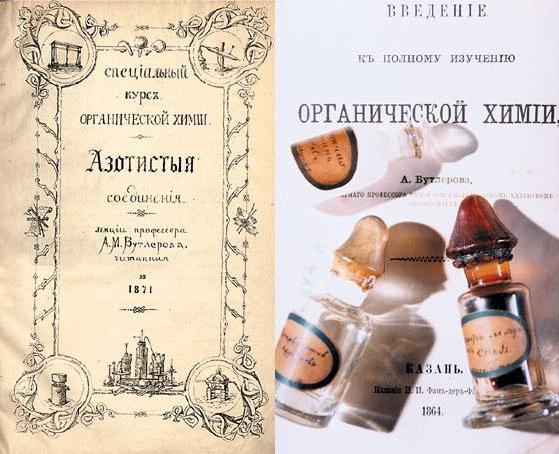Butlerov Alexander Mikhailovich, whose brief biography is found in almost all chemistry textbooks, is a well-known Russian chemist, the founder of the scientific school of organic chemistry, the founder of the theory of the structure of organic substances, who predicted and explained the isomerism of a large number of organic compounds and synthesized some of them (urotropine, a formaldehyde polymer and etc.). Also, Alexander Mikhailovich, whose contribution to science was highly appreciated by D.I. Mendeleev, wrote works on beekeeping and agriculture.
Butlerov Alexander Mikhailovich: a brief biography
The future scientist was born on September 15, 1828 in the family of a former military man, at that time a landowner. His father Mikhail Vasilievich participated in the war of 1812, and after his resignation he lived with his family in the ancestral village of Butlerovka. Mom, Sofya Alexandrovna, died at the age of 19, immediately after the birth of a child. Alexander spent his childhood in Butlerovka and his grandfather's estate - the village of Podlesnaya Shantala, where he was educated by aunts. At 10 years old, the boy was sent to a private boarding house, where he well mastered French and German. In 1842, after a terrible fire in Kazan, the boarding school was closed, and Sasha was transferred to the 1st Kazan gymnasium. In these educational institutions, Butlerov collected insects and plants, was very interested in chemistry and conducted his first experiments. The result of one of them was an explosion, and the punishment for Alexander for his deed was his imprisonment in the punishment cell with a plaque on his chest “The Great Chemist”.
Student Years
In 1844, Butlerov A.M., whose biography is permeated with a love of chemistry, became a student at Kazan University, which at that time was the center of natural scientific research. At first, the young man was very interested in zoology and botany, but then his interest, under the influence of lectures by K.K. Klaus and N.N. Zinin, spread to chemistry. On their advice, the young man organized a home laboratory, but butterflies were the subject of the candidate, possibly due to Zinin’s move to St. Petersburg.

After graduating from the University of Butlerov in 1849, Alexander Mikhailovich, requested by N.I. Lobachevsky and K.K. Klaus, devoted himself to teaching and lectured in physical geography, physics and chemistry. Moreover, Alexander Mikhailovich was an excellent speaker, being able to completely control the attention of the audience due to the clarity and rigor of presentation. In addition to lectures at the university, Butlerov gave lectures available to the public. The Kazan audience sometimes preferred these performances to fashionable theatrical productions. He received a master's degree in 1851, and in the same year he married Glumilina Nadezhda Mikhailovna, the niece of Sergei Timofeevich Aksakov. After 3 years he defended his doctoral dissertation at Moscow University on the topic "On Essential Oils". After that he was elected at Kazan University as an extraordinary, and a few years later an ordinary professor of chemistry. From 1860 to 1863, against his own will, he twice acted as rector, and the rectorship fell on a rather difficult period in the history of the university: the Kurtin funeral service and the bottomless unrest affecting students and the faculty.
Trip to europe
Alexander Mikhailovich actively participated in the activities of the economic society of the city of Kazan, published articles on agriculture, botany and floriculture. The biography of Alexander Butlerov includes three trips abroad, the first of which took place in 1857-1858. A Russian scientist visited Europe, where he visited chemical enterprises and met with leading chemical laboratories. In one of them, in Paris, he worked for almost half a year. At the same time, Butlerov Alexander Mikhailovich listened to lectures by such prominent European minds as A. Bekkerel, E. Mikerlich, J. Liebig, R.V. Bunsen, and made acquaintance with Friedrich August Kekule - a German chemist.

Upon his return to Kazan, A. Butlerov, whose biography is of interest not only in Russia but also abroad, re-equipped the chemical laboratory and continued research on methylene derivatives that began at Würz. In 1858, the scientist discovered a new method for the synthesis of methylene iodide and carried out a number of works related to the extraction of its derivatives. In the synthesis of methylene diacetate, I obtained a formaldehyde polymer - a product of saponification of the test substance, the result of experiments on which was hexamethylenetetramine and methyleneinate. Thus, Butlerov for the first time made a complete synthesis of a sugar substance.
Butlerov Alexander Mikhailovich: briefly on the achievements of the scientist
In 1861, Butlerov spoke at Speyer at the Congress of German Doctors and Naturalists with a lecture on the chemical structure of matter, which was based on an introduction to the state of chemistry abroad, an irresistible interest in the basics of chemistry from a theoretical point of view, and his own experiments carried out throughout all scientific activity.
His theory, which included ideas about the ability of A. Cooper to form chains by carbon atoms and about A. Kekule valency, suggested the chemical structure of molecules, by which the scientist understood the method of connecting atoms together depending on a certain amount of chemical force (affinity), characteristic of each atom.
Important aspects of Butlerov's theory
A Russian scientist established a close relationship between the structure and chemical properties of a complex organic compound, which managed to explain the isomerism of many of them, including three pentanes, two isomeric butanes, and various alcohols. Butlerov’s theory also made it possible to predict possible chemical reactions and explain them.
Thus, in his theory, Alexander Mikhailovich Butlerov:
- showed the insufficiency of the then existing theories of chemistry;
- emphasized the paramount importance of the theory of atomicity;
- defined the chemical structure as the distribution of affinity forces belonging to atoms, as a result of which the atoms, influencing each other (mediocre or direct), are combined into a chemical particle;
- defined 8 rules for the formation of chemical compounds;
- the first to draw attention to the difference in the reactivities of dissimilar compounds, explained by the lower or greater energy with which the atoms connect, as well as the incomplete or complete expenditure of affinity units during bond formation.
Scientific achievements of the Russian chemist
The biography of Alexander Butlerov is briefly described in school textbooks, with dates of life and his greatest achievements in scientific activity. On the account of the Russian scientist a huge number of experiments aimed at confirming his theory. The scientist, having previously synthesized, determined in 1864 the structure of tertiary butyl alcohol, in 1866 - isobutane, in 1867 - isobutylene. He also recognized the structure of a number of ethylene carbons and polymerized them.
In the years 1867-1868. Butlerov Alexander Mikhailovich, whose brief biography is of genuine interest to scientists around the world, was appointed professor of chemistry at St. Petersburg University. Introducing him to the staff of this institution, Mendeleev emphasized the originality of Butlerov’s doctrine, which is not a continuation of someone’s work, but belongs to him personally.
In 1869, Butlerov finally settled in St. Petersburg, where he was elected extraordinary, and then ordinary academician of the St. Petersburg Academy of Sciences. The life period in St. Petersburg was very active: the professor continued his experiments, polished the theory of chemical structure, and participated in public life.
Hobbies in the life of a scientist
In 1873 he began to study the history of chemistry and lectured on this subject. He wrote the first guide in scientific history, based on the theory of chemical structure - "Introduction to the complete study of organic chemistry." Alexander Mikhailovich Butlerov is the founder of the school of Russian chemists, otherwise called “Butlerov school”. In parallel with the study of chemistry, he was actively interested in agriculture. In particular, he was interested in growing tea in the Caucasus, gardening and beekeeping. His brochures “How to Drive Bees” and “The Bee, Its Life and the Main Rules of Smart Beekeeping” were reprinted many times, and in 1886 he founded the magazine “Russian Beekeeping Leaf”.
In the years 1880-1883. Butlerov Alexander Mikhailovich, whose brief biography is interesting and replete with discoveries important for science, was the president of the Russian Physicotechnical Community. In the same period, the scientist was very interested in spiritualism, which he met on the Aksakovs estate in 1854. Later, the Russian chemist closely became close to his wife's cousin A.N. Aksakov, who published the journal Psychological Studies, a spiritualist journal, and ardently defended his hobby for those acquaintances and friends who had condemned him.
The value of the work of Butlerov Alexander Mikhailovich for chemistry
Alexander Mikhailovich was to resign in 1875, after 25 years of service. The Council of St. Petersburg University twice moved this period to 5 years. The last lecture of Alexander Mikhailovich Butlerov took place on March 14, 1885. His health failed, undermined by intense scientific work and social activity: unexpectedly for all Butlerov died in his estate on August 5, 1886. The scientist was buried in the village cemetery of his native Butlerovka, now defunct, in the family chapel.
Butlerov’s work gained worldwide recognition during his lifetime, his scientific school is considered an integral component of the development of chemistry in Russia, and the biography of Alexander Butlerov is of genuine interest to scientists and students. Alexander Mikhailovich himself was a very charming and versatile person with a sociable character, wide views, good-naturedness and condescending attitude towards students.